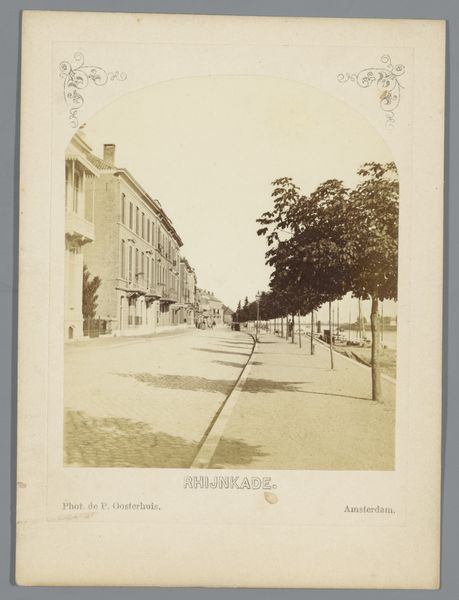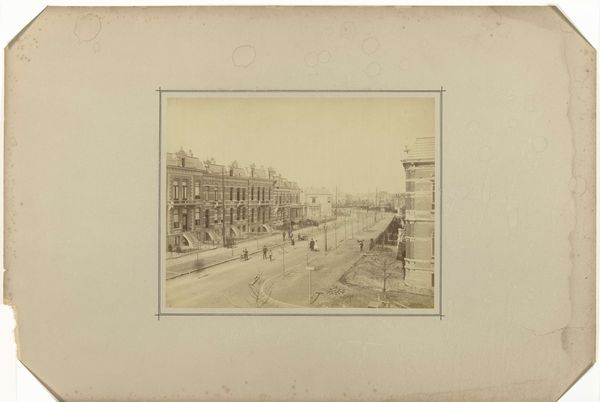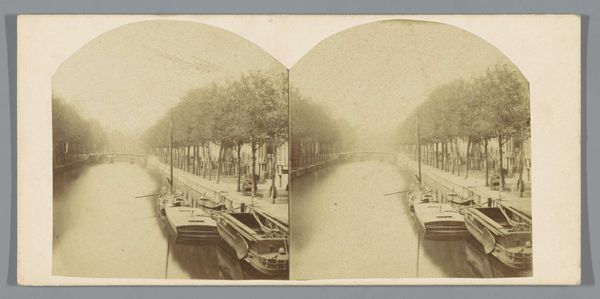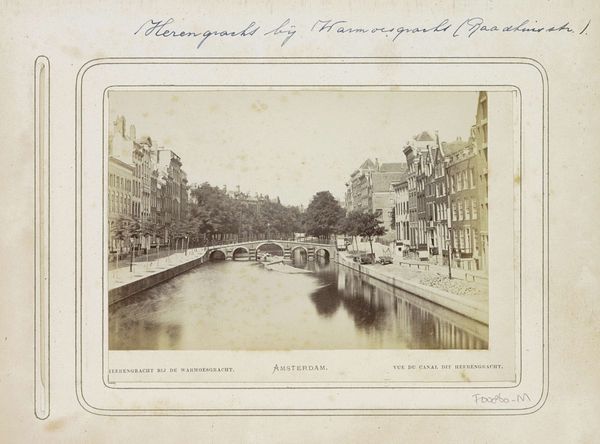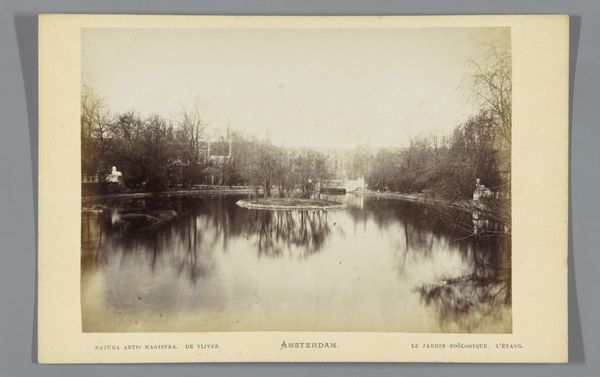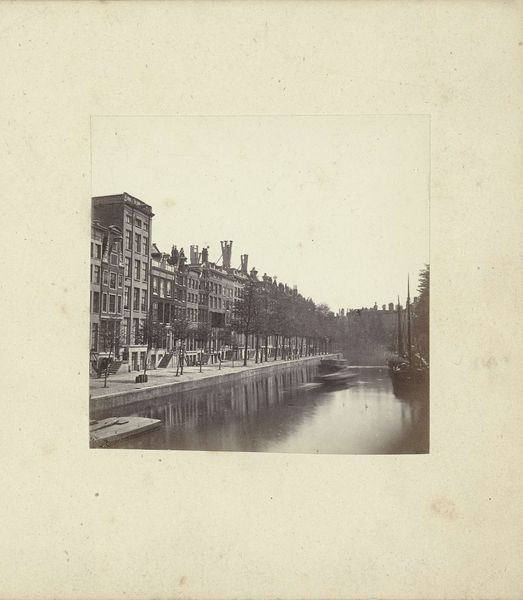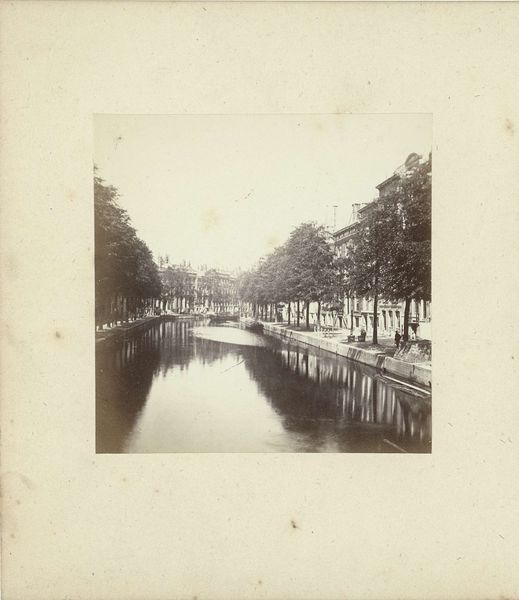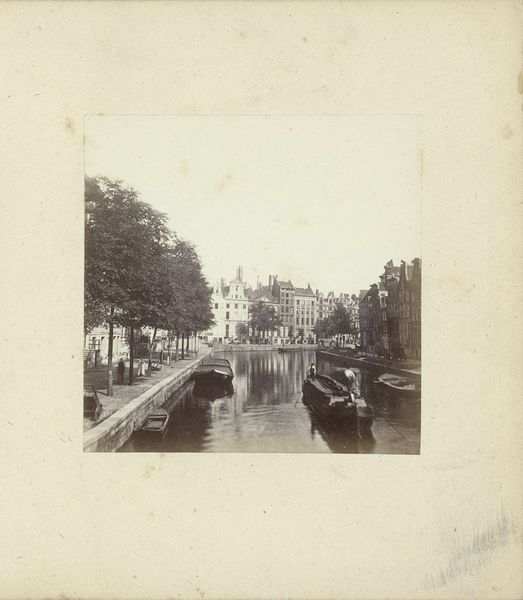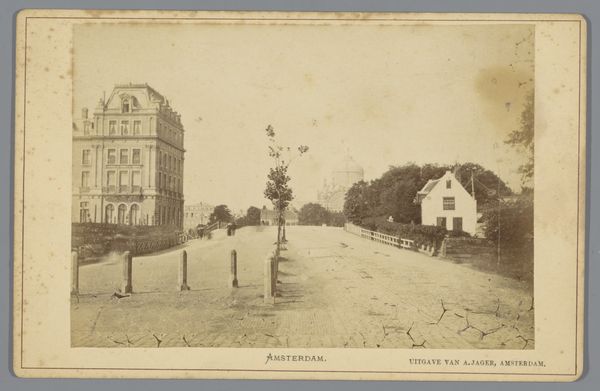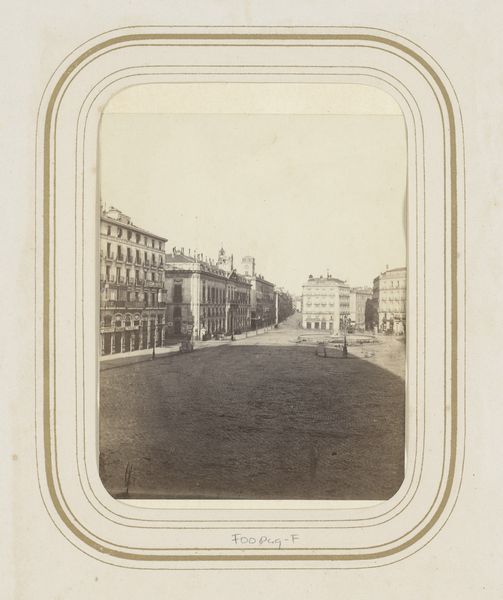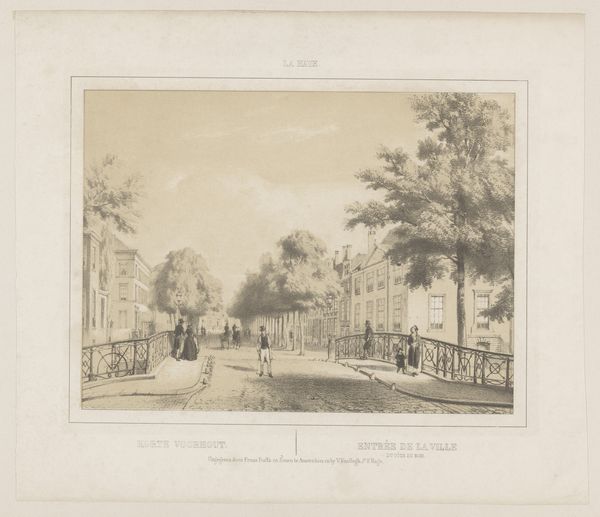
#
aged paper
#
paper non-digital material
#
flat design on paper
#
light coloured
#
personal journal design
#
book mockup
#
magazine mockup
#
publication mockup
#
design on paper
#
street
#
publication design
Dimensions: height 85 mm, width 56 mm, height 104 mm, width 65 mm
Copyright: Rijks Museum: Open Domain
Curator: The work before us, created sometime between 1860 and 1890, is entitled "Gezicht op de Herengracht in Amsterdam" by Andries Jager, found at the Rijksmuseum. It appears to be a print on paper, evoking the iconic canal. What are your initial thoughts? Editor: It has such a delicate quality. I am immediately struck by the way the sepia tones imbue the image with a palpable sense of the past. It's more than just documentation; the composition seems to create a commentary about light and texture. Curator: Absolutely. The material properties of the print itself are worth noting. The aging of the paper is integral to our perception—it signifies both time and the labor of maintaining such works. Consider the choices available to Jager in presenting his subject. Editor: The printing process undoubtedly affected the image's materiality. It makes you consider the labour behind it, especially because it is difficult to gauge print counts, but it is undoubtedly produced to make money. Its inherent link to the commodification of the urban view as souvenir feels worth dwelling upon. Curator: It certainly elevates the work beyond simple urban landscape—the print serves as both document and artifact, engaging with ideas about the modernizing city. The tonal gradations are meticulously rendered, emphasizing a sense of atmospheric depth. Note how light seems to filter through the scene—illuminating surfaces but obscuring certain details. It highlights compositional arrangement: reflections on the water guide us toward the distant vanishing point; architectural forms contrast to softened foliage in the peripheries... The print invites our eye through layers of information towards that center point! Editor: That effect truly pulls one in—Jager focuses not only to depict reality—the act transforms our sense toward labour in the act of image production with that light which gives tangible evidence that someone was there, capturing this scene on their lunch break or for payment: something tangible happening instead. Curator: Exactly. Focusing on the photographic printing, along with Jager's use of atmospheric perspective gives the depicted scene the air of classicism despite modern advances during that century, no? A marriage of traditional arrangement within advanced means—truly captivating to unpack when considered so holistically. Editor: Yes. Understanding these details allows one to engage deeper when looking towards the artwork, bringing meaning forward into conversations past what many may typically be concerned with these days.
Comments
No comments
Be the first to comment and join the conversation on the ultimate creative platform.
